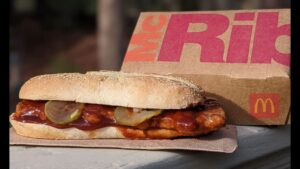Introduction
Is Ross fast fashion? That’s a question many consumers are asking today, especially in a world where ethical shopping is becoming increasingly important. Before we dive deep into whether Ross falls under the fast fashion umbrella, it’s essential to understand what fast fashion really means. Let’s break it down together and see where Ross fits.
What is Fast Fashion?
Fast fashion is a term that’s been thrown around a lot lately. Essentially, it refers to clothing brands that produce large quantities of trendy, low-cost clothing at breakneck speed. Brands like Zara, H&M, and Forever 21 are often associated with fast fashion due to their rapid production cycles and affordable prices. But the problem with fast fashion is that it often sacrifices quality, sustainability, and ethics for the sake of speed and profit.
So, where does Ross stand in all this? To understand that, let’s look at Ross Stores more closely.
Defining Ross Stores
Ross Stores, Inc., more commonly known as just Ross, is a discount department store chain primarily located in the United States. Founded in 1957, Ross has built a reputation for offering “name brand and designer fashions for less.” They are known for their “treasure hunt” experience, where customers can find designer and brand-name items at deeply discounted prices. But is this the same as fast fashion?
A Brief History of Ross
Ross started as a department store in California but transformed over the years into the off-price retailer we know today. Unlike traditional retail stores, Ross doesn’t typically carry the latest trends as they appear on the runway. Instead, they offer overstock or end-of-season items from various brands at a fraction of the original price.
The Concept of Fast Fashion
Fast fashion is all about speed—getting runway looks to consumers as quickly as possible. These items are typically made with cheaper materials and less focus on long-term wear. The business model is driven by rapidly changing trends, and companies push out new designs weekly, if not daily. But this approach has its downsides, like waste, labor exploitation, and environmental harm.
Ross Business Model
Now, Ross operates differently from your typical fast fashion retailer. While fast fashion brands design, manufacture, and distribute their own products quickly, Ross buys excess inventory from manufacturers or other retailers. So, they’re not pushing out brand-new trends but rather selling what’s left over from other brands.
How Ross Operates
Ross doesn’t produce its own clothing like traditional fast fashion brands. Instead, it sources its stock from surplus products, canceled orders, or unsold inventory. This method allows them to offer a wide range of items at a lower price but doesn’t align directly with the fast fashion model of constant newness.
Ross and Fast Fashion: The Connection
So, why do some people consider Ross part of the fast fashion world? The connection stems mainly from its low prices and high product turnover. However, while the affordability and abundance of products at Ross may resemble fast fashion, the way Ross sources its goods—primarily through liquidation and overstock—makes it stand apart from typical fast fashion retailers.
Analyzing Ross’s Supply Chain
A closer look at Ross’s supply chain reveals that the company doesn’t engage in the same practices as traditional fast fashion companies. Ross doesn’t rapidly produce new clothing collections but instead purchases excess goods from brands that overproduced or retailers that didn’t sell their stock.
Is Ross Truly Fast Fashion?
While Ross does offer affordable clothing like fast fashion brands, they differ significantly in terms of product sourcing and production methods. Instead of contributing to the cycle of constant trend production, Ross takes advantage of excess in the market. This places Ross in a somewhat gray area—it’s fast fashion-adjacent but not quite the same.
Comparing Ross to Other Fast Fashion Brands
Compared to companies like H&M or Zara, Ross operates more as an off-price retailer. Fast fashion brands push new collections based on the latest trends, whereas Ross carries an unpredictable mix of items that may have been on a previous season’s shelf.
Ross’s Pricing Strategy
Ross’s pricing strategy is a big part of why people lump them in with fast fashion. Consumers can find items for 20-60% less than traditional retail prices, which makes it an appealing shopping option for those looking for a bargain. However, unlike fast fashion brands that price low by cutting corners on quality, Ross buys goods at a lower cost and passes on those savings.
How Low Prices Affect Perception
Low prices often make consumers associate stores with fast fashion, but it’s important to distinguish between the pricing model and the actual production process. Ross doesn’t manufacture its items to be cheap; it just buys them at a discount.
Sustainability in the Fashion Industry
Sustainability is one of the biggest criticisms of fast fashion. The rapid production of clothing leads to environmental degradation, from excessive water use to massive textile waste. Brands that operate on a fast fashion model are often criticized for their harmful impact on the planet.
Ross’s Approach to Sustainability
Ross’s business model of buying surplus inventory can be seen as somewhat sustainable, at least more so than traditional fast fashion. By selling unsold items, Ross helps reduce waste in the fashion industry. However, the company hasn’t made significant strides in terms of eco-friendly initiatives or sustainable business practices, leaving room for improvement.
The Consumer Perspective
Why do consumers choose Ross? For many, it’s the promise of a deal. Shoppers go to Ross not just for clothing but for home goods, accessories, and more, all at discounted prices. The “treasure hunt” model keeps customers coming back, as they never know what they might find. But does this desire for savings overshadow the need for more responsible shopping?
Alternatives to Fast Fashion
If you’re looking to shop more ethically, consider buying from sustainable brands, shopping second-hand, or opting for higher-quality, longer-lasting pieces. While Ross isn’t at the forefront of the sustainability movement, it may be a better option than fast fashion giants purely due to its sourcing practices.
Ross’s Place in the Fashion Industry
Ross occupies a unique space in the fashion world. It’s neither fully fast fashion nor a traditional department store. Instead, it offers consumers discounted products from various brands. While this business model has been successful, it’s essential for consumers to remain aware of where and how they shop.
The Future of Ross and Fast Fashion
As consumer demand for sustainability grows, Ross may need to adopt more eco-friendly practices to stay competitive. Could Ross implement more sustainable business strategies in the future? Only time will tell. For now, they sit in a gray area, neither fully fast fashion nor entirely sustainable.
Conclusion
In conclusion, while Ross may appear to be a fast fashion brand due to its low prices and ever-changing inventory, it operates differently from typical fast fashion retailers. Ross sources its products through overstock and unsold goods, which distances it from the rapid production cycles and environmental harm associated with fast fashion. However, Ross could improve in terms of sustainability, especially in an industry that is increasingly moving toward more responsible practices.



















